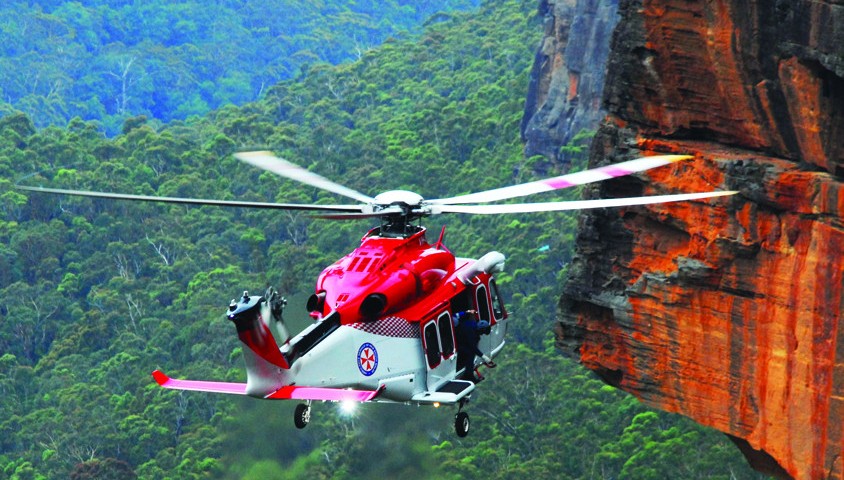Have you heard someone refer to their handheld emergency beacon as an EPIRB before, even if it says ‘PLB’ quite clearly somewhere on its casing? Perhaps you’re even aware of making this common error from time-to-time?
The fact is, it seems that the majority of Australian outdoor users have fallen into the habit of saying EPIRB regardless of the fact that there are several important distinctions between the two devices. For the uninitiated, these devices (along with ELT’s, to add to the confusion) are all classed under the broader heading of ’emergency beacons’ and are used to communicate a location to search and rescue services in times of dire need.
On the subject of EPIRB versus PLB, some readers may ask, ‘Who cares?’ Well, the Australian Maritime Safety Authority (AMSA) is involved in monitoring and enforcing regulations regarding the use of these devices, so its staff members take the issue quite seriously.
“There is a big difference between each distress beacon type,” said AMSA spokesperson Linda Berryman. “While all distress beacons transmit on 406 MHz and 121.5 MHz frequencies, their technical features and standards of compliance vary.”
Members of ambulance as well as remote search and rescue teams also care about the average punter understanding the difference as their experience reveals what can happen when a person is put into a high pressure emergency situation, and this is only compounded should that person be unsure about the technology they’re attempting to use.
So what are these critical differences? For the most part, the distinction between these devices are a matter of size and shape, resulting from their intended uses. EPIRBs are designed to be attached to marine vessels, ELTs are used in aviation and PLBs are for individuals (PLB, after all, stands for personal locator beacon).
While there are anecdotal accounts of bushwalkers heading out with a foot-long EPIRB strapped to their packs, we like to think people want to use the best device for the purpose at hand. Even paddlers are better served using a PLB (so long as it has a buoyant case on it). However, in the case of piloting a plane or a boat, you’re often required to use a specified device by law.
To read about the current EPIRB and PLB market, you can read our Tried & Tested article of issue 146. Alternatively, the Survivalist piece in issue 147 provides practical advice on how to get rescued in a terrestrial emergency.
Subscribe here and receive the latest issue of Wild.
For the summary on EPIRB and PLB technical details, AMSA has provided the following:
EPIRBs
- Must comply with AS/NZ Standard 4280.1 (EPIRB)
- Maritime legislation states if vessel traveling more than 2nms from coastline must carry an EPIRB registered with AMSA.
- CASA (Aviation) legislation states under General Aviation aircraft must have either have an ELT, EPIRB or PLB.
- Must transmit for a minimum of 48hrs
- Must float vertically self right
- Must have a strobe light
- Must have a lanyard
- Must have reflective tape
- Options for methods of activation include; manual switch, manual & water switch
- Options for bracket include; manual release bracket or float free enclosure
- Primarily designed for Maritime use however some people purchase EPIRB to meet maritime legislation and use it for a secondary use for land use or aviation. They prefer to buy one product and use for each application. EPIRBs are a bigger, heavier product.
PLBs
- Must comply with AS/NZ Standard 4280.2 (PLB)
- CASA (Aviation) legislation states under General Aviation aircraft must have either have an ELT, EPIRB or PLB.
- Must transmit for a minimum of 24hrs
- They are required to float but NOT vertically self right once activated. They are only required to float in case you drop in the water and need to retrieve it. Some PLB models have a floatation pouch. All PLBs once activated must be fitted to the upper section of lifejacket and ensure aerial if vertical once activated
- Optional to have a strobe light
- Small lanyard required to enable fitment to something to prevent loss of PLB
- Manual activation only
- No requirement for reflective tape
- Optional for an inbuilt strobe light
- Small, compact, lightweight, portable product. Multi Environment product. Great for personal safety for bushwalking, 4WD, crew onboard vessels in case of Manoverboard, pilots. They do not meet maritime legislation compliance as a replacement to an EPIRB
So, there it is. Next time you’re out bushwalking and someone mentions packing their EPIRB, ask them if they’ve packed their yacht, too.


